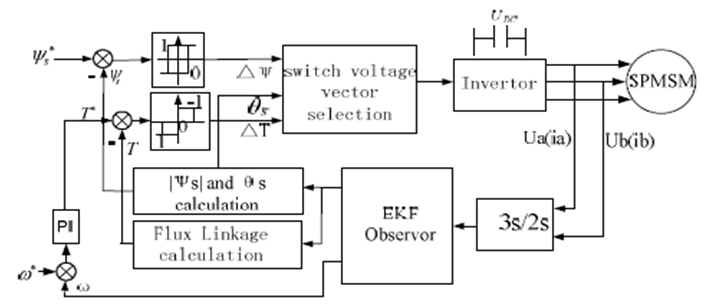Research on Three-phase Voltage Type PWM Rectifier System Based on
SVPWM Control
ABSTRACT:
The fundamental principle
of SVPWM is introduced in this study. The design on the structure of three phase
voltage type PWM rectifier system based on SVPWM control was also discussed.
Then we calculate the DC capacitor and AC side inductance. The computer
simulation tool MATLAB/Simulink is taken and the result is shown in the end.
The result indicates that the design of such platform is feasible.
KEYWORDS:
1.
Power factor
2.
PWM rectifier
3.
space voltage vector
4.
three-phase voltage
SOFTWARE: MATLAB/SIMULINK
BLOCK DIAGRAM:
Fig. 1: The three phase PWM
rectifier voltage fixed vector control diagram
CONCLUSION:
This
study introduces SVPWM control principles and adopts three-phase PWM rectifier
digital control system based on SVPWM control on the basis of this. Besides,
AC-side incoming inductance and DC-side capacitance are calculated and
selected. Then, each simulation module is established for the whole system by
use of simulation software MATLAB/Simulink and simulation researches are
conducted. The simulation result shows the digital control system designed is feasible.
REFERENCES:
Boon, T.O. and W. Xiao, 1990. Voltage angle
lock loop control of the boost type PWM converter for HVDC application [J].
IEEE Tran. Power Elec., 5(2): 229-235.
Fujita,
H., Y. Watanabe and H. Akayi, 1998. Control and ana1ysis of a unified power
flow controller [J]. IEEE PELS, 98: 805-811.
Li,
Z., J. Wang and L. Huade, 2006. Review on nonlinear control strategies of three
phase boosttype PWM rectifiers. Electric Drive, 36(1): 9-13.
Marian,
P.K. and M. Luigi, 1998. Current control techniques for three-phase
voltage-source PWM converters [J]. A survey. IEEE Trans. Power Elec., 45(5):
508-515.
Mariusz,
M., M. Jasin’ski and P.K. Marian, 2004. Simple direct power control of
three-phase PWM
rectifier using
space-vector modulation [J]. IEEE Trans. Ind. Elec., 51(2): 447-454.






